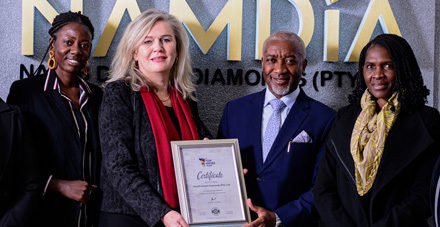
Finding Win-Win trade and working capital solutions
By RMB Namibia Trade & Working Capital
While there are still growing economies which boast Gross Domestic Product growth north of 5%, the African continent remains the present day frontier of opportunity. However, operating in Africa is becoming more challenging with tighter liquidity, currency volatility, and political and macro-economic instability just some of the obstacles businesses face.
The requirements for trade exist in that there are willing buyers purchasing from willing sellers. Understanding and mitigating the risks associated with international trade is becoming the fundamental way to engage customers and distributors when negotiating away from riskier open account terms. Demanding payment in advance naturally puts the exporter in a superior position, creating the necessary comfort required for exporting goods. But the adverse impact for many, however, is that whilst the seller is in a superior risk position, the revenue line deteriorates when discounts are given. Interest rates and costs of raising liquidity for advances, often make the deals unworkable for buyers.
Introducing banks as active risk parties to the transaction, playing more than the role of paying and collecting funds, enables the use of other risk-mitigant products such as documentary credits, and standby letters of credit (SBLC). This is a very viable method of mitigating risks but also comes at a cost to the buyer and seller. When used in isolation, it is somewhat difficult to find the obvious value, as demanding a letter of credit (LC) or SBLC from a customer might still require cash collateral for the respective bank issuing the LC/SBLC. As such, these risk mitigating instruments should be used as a method of payment at the negotiation stage of a contract to ensure that there is enough value, for both buyer and seller, when using such mediums for payment.
Remaining profitable in a highly competitive or very challenging market is, to a large degree, about pulling and pushing levers in a working capital cycle to ensure win-win situations for both buyer and seller. Any risk mitigant is available in this market to ensure timeous payment, if the selling price allows. Taking control of the selling price by leveraging these various levers in a working capital cycle can be the key differentiating factor that most global corporates are looking for on the continent.
Evolving Risk Mitigation
The use of an LC can give the exporter the comfort that when goods are placed on a ship, truck or in a warehouse, depending on the Incoterm, payment is guaranteed. For the importer a LC can provide credit terms, or extending delivery risk and responsibility. Discounting the LC for the exporter, as a funding mechanism, might prove to be cheaper compared to that of the importer’s ability to raise competitive funding. The win-win transaction accepts the fact that a credit term exists that allows a period until near sale is required. Whether the exporter or importer funds this gap, the result of the eventual selling price to the end customer is either positive, developing sustainable business flow, or negative, killing any hope for healthy business continuation.
Another example and reason for holistic negotiation is the leveraging on the strength of the stronger balance sheet – contract for carriage and insurance might be cheaper than what a customer might pay, given a company’s credit rating and balance sheet, inevitably reducing the eventual selling price to the end customer. A simplistic change of the incoterm can make this possible.
Having the correct tools in one’s arsenal, and in-depth support of how these tools are to be used, forms the foundation of achieving a balanced and fair negotiation of the commercial terms and conditions of a transaction. Africa’s business needs to be about sustainable business development, not about one party lucratively benefiting and the other struggling to makes ends meet as these relationship inevitably wither and die. Knowing what tools are available and finding that win–win solution are necessary to create the balance required for sustainable trade development on the continent.













































